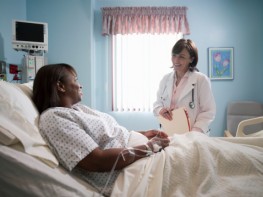Communication Errors by Doctors and Nurses Common Cause of Preventable Hospital Errors
24January2014
24January2014

According to the researchers at Boston Children’s Hospital, miscommunication among doctors, nurses, and other providers as they hand off the responsibility of caring for patients often leads to preventable medical errors, according to a study recently published in the Journal of the American Medical Association.
Medical errors are a leading cause of preventable injuries and death in the United States. An estimated 80 percent of serious medical errors involve some form of miscommunication, the researchers say. By standardizing communication among doctors, nurses, and other providers during patient hand-offs, Boston Children’s Hospital had a substantial drop in the number of medical errors.
The researchers developed a structured hand-off program with the help of the hospital’s informatics team. The program was designed to standardize the process of transferring patient information during shift changes. Many errors during this stage are due to mistakes in updating documentation of medical records. The researchers focused on this issue.
The program was designed to continually update documentation automatically with patient information. This eliminated the need for doctors, nurses, and others to enter and re-enter information manually on a patient’s information document. Manual entering and re-entering of information is a process that is rife with the possibility of error. The new system eliminated those risks.
The team tested the new patient hand-off tool, examining more than 1,255 patient admissions at Boston Children’s Hospital. The researchers wanted to see whether the new process, with its standardized communication procedures, reduced medical errors and how it affected patient care and workflow.
The researchers found fewer errors and omissions involving important data during patient handoffs using the new system. As a result, errors fell by nearly 46%.
The researchers found a number of collateral benefits as well. When doctors and nurses used the new standardized communication procedures, they spent more time at patient bedsides and more time communicating in a quiet environment one-on-one, in a way that was conducive to patient safety.
Communication failures in hospitals are a common source of medical errors that have the potential to hurt patients. According to a study by the American College of Surgeons, 90 out of 460 medical malpractice claims, or close to 20%, were very closely linked to failures in communication.
Of the 460 claims, approximately 36 were linked to communication failures involving patients and their families, and 35 were linked to communication failures involving physicians. Also, 19 claims were linked to communication failures involving nurses.
The study found 47 claims related to the failure to ask for information or to listen, and 46 claims related to the failure to convey information.